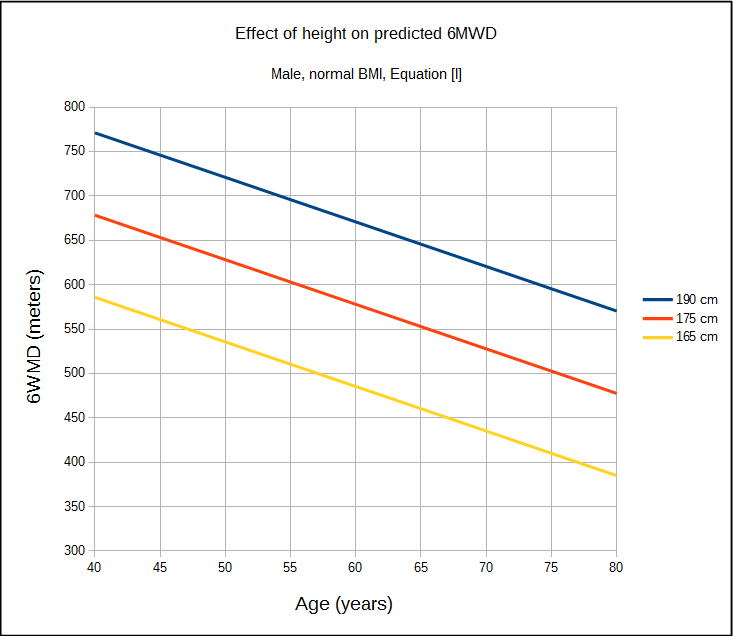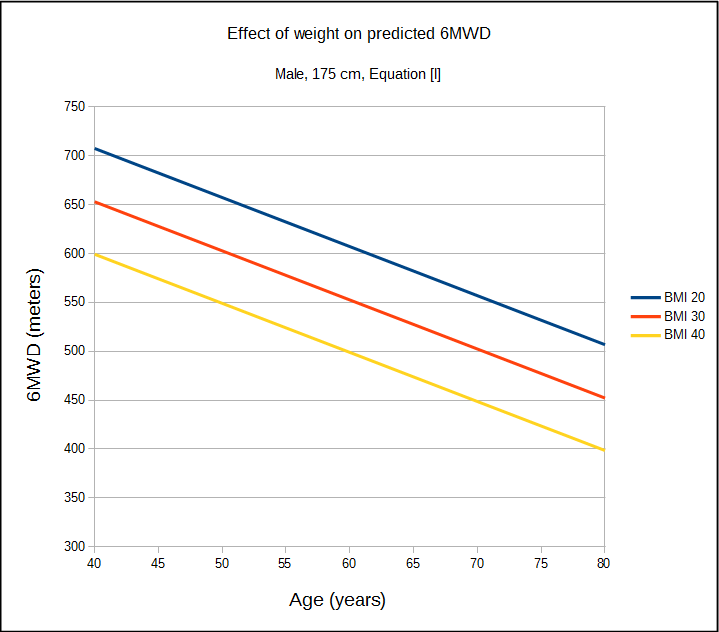I often find topics for this blog in a sideways fashion. Recently while searching for something else I ran across an article about the minimum clinically important difference (MCID) of the Residual Volume (RV) in patients with emphysema. I’ve come across the MCID concept before but I had never really followed up on it. This time I started researching MCID and immediately ran across a number of articles about the MCID of the 6-minute walk test (6MWT). This got me to review the articles I have on hand and I found that since I last wrote about the 6MWT I’ve accumulated quite a few new (or at least new to me) reference equations as well as a number of articles about performance issues. Given all this how could I not re-visit the 6MWT?
In addition to the 6 reference equations I had previously I’ve found another 13 female and 14 male reference equations for the 6MWT (total 19 female, 20 male) which is an opportunity to re-visit the selection process. This immediately raises the question about what factors should be used to calculate the predicted 6-minute walk distance (6MWD). Because the 6MWT is essentially an exercise test age has an obvious effect on exercise capacity so it is no surprise that with the exception of one set all of the reference equations consider age to be a factor. It should be noted however, that many of the reference equations are intended to be only applied over a limited range of ages and this may limit their utility.
Given the fact that stride length and therefore walking speed are directly related to height it is somewhat surprising to find that only twelve of the male and eleven of the female reference equations consider height to be a factor. When height is a factor, the predicted 6MWD is usually affected something like this:
Weight also affects exercise capacity but an interesting question is whether the observed 6MWD should be compared to a predicted 6MWD based on a “normal” weight or whether the 6MWD should be adjusted to the individual’s actual weight and assessed accordingly. To some extent this is already an issue in current PFT predicted equations. For example, weight is not a factor in any of the FVC or TLC reference equations and when lung volumes are decreased in the presence of obesity they are considered to be abnormal. On the other hand, the reference equations I use for maximum oxygen consumption during a CPET include weight as a factor and for a number of reasons this is likely the correct approach. For this last reason I would think that weight should be a factor and ten of the reference equation sets consider weight (or BMI) to be a factor. When weight is a factor, the predicted 6MWD is usually affected like this:


